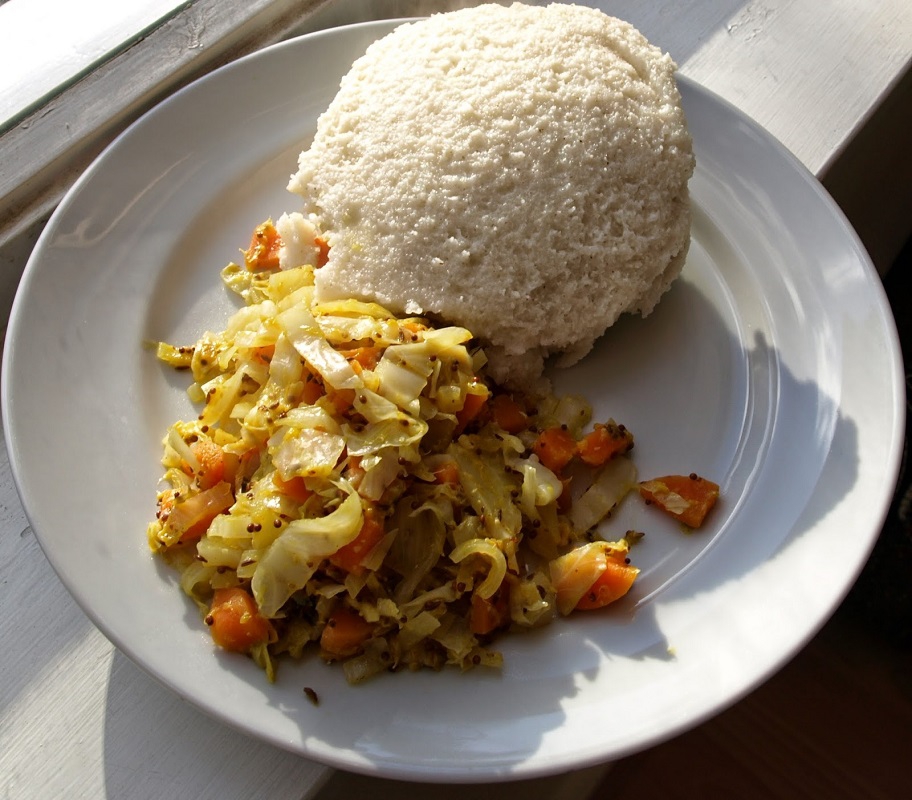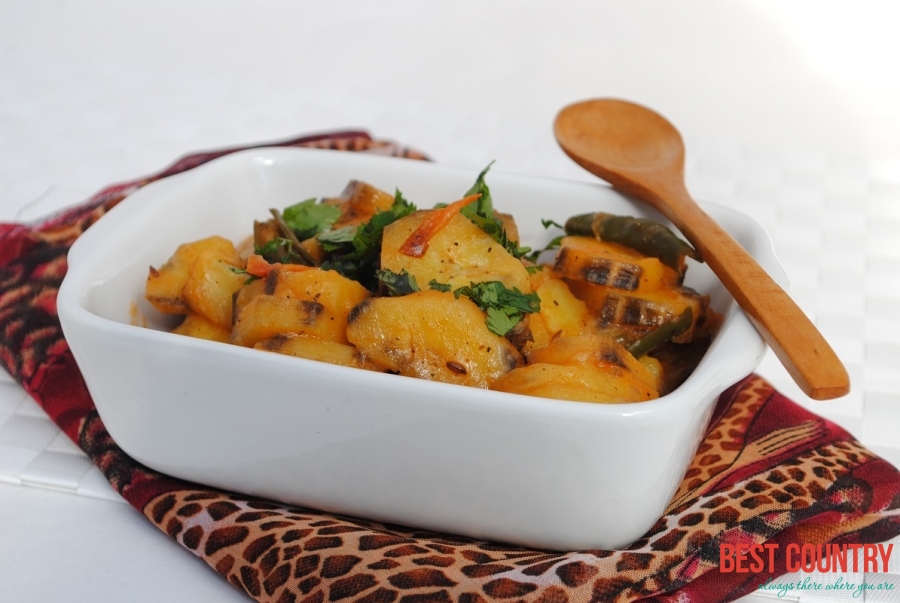The cuisine of Rwanda is based on local staple foods produced by the traditional subsistence-level agriculture and has historically varied between the country's different ethnic groups.
Rwandan cuisine
Background
Rwandan staples include bananas, plantains, pulses, sweet potatoes, beans, and cassava (manioc). Historically this is particularly true of the Twa and the Hutus who hunted and farmed. Their diet was high in vegetables and lacking in animal protein due to the small amount of animal products consumed. The Tutsis were traditionally pastoralists and consumed a higher amount of milk and dairy products.
Many Rwandans do not eat meat more than a few times a month. For those that live near lakes and have access to fish, tilapia is popular. The potato, thought to have been introduced to Rwanda by German and Belgian colonists, is now very popular and is cultivated in the towns of Gitarama and Butare.
National dishes
 Various dishes have evolved from the range of basic foods consumed. Ugali (or bugali) is a paste made from maize and water, to form a porridge-like consistency that is eaten throughout East Africa. Isombe is made from mashed cassava leaves and served with dried fish.
Various dishes have evolved from the range of basic foods consumed. Ugali (or bugali) is a paste made from maize and water, to form a porridge-like consistency that is eaten throughout East Africa. Isombe is made from mashed cassava leaves and served with dried fish.
 Matoke is a dish made from baked or steamed plantains. Ibihaza is made from pumpkins cut into pieces, mixed with beans and boiled without peeling them. Ground nuts paste Ikinyiga, and Millet flour paste umustima w’uburo both of these pastes are made from boiling water and flour, mixed to a porridge like consistency.
Matoke is a dish made from baked or steamed plantains. Ibihaza is made from pumpkins cut into pieces, mixed with beans and boiled without peeling them. Ground nuts paste Ikinyiga, and Millet flour paste umustima w’uburo both of these pastes are made from boiling water and flour, mixed to a porridge like consistency.
In the restaurants in the capital city of Kigali, locals and expatriates eat a variety of international cuisine, including Indian, Chinese, Italian, and African. In other cities and towns, the cuisine is simpler, often consisting of chicken, fish, goat or steak served with rice or french fries.